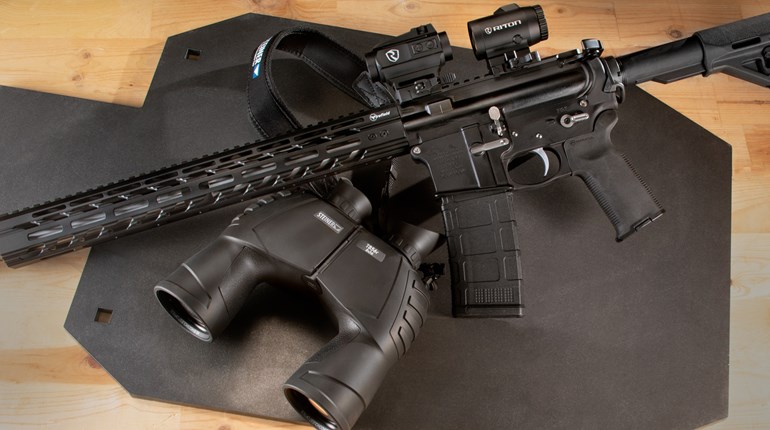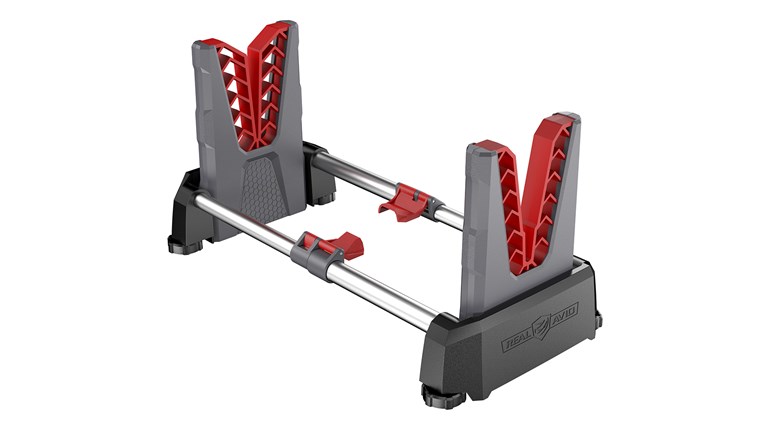
Centerfire-rifle gas systems are wonderful things…as long as they are functioning properly. Unfortunately, they are seldom as upkeep-free as makers are prone to claim. The byproducts of cartridge combustion have to go somewhere once a gas system’s volume is maxed out under pressure. When that somewhere is a piston head, inside a receiver or inside an adjustable gas system, eventually it will need to be removed. Here are a few tips to help keep your gas-powered rifle running while extending the life of critical operating components in the process.
Direct-impingement (DI) gas tubes—such as those used on most AR platforms—should be checked periodically to ensure the hardware that secures them is present and tightly fitted. If you can access that area, removing the roll pin (or screw) will allow you to inspect the forward end of the gas tube for any cracks where the pin passes through. This is not a frequent check, but it is worth doing anytime you remove a gas tube. Any cracking around the pin hole requires replacement of the tube. Remember to re-pin the gas tube after reinserting it into the block.
Gas tubes benefit from periodic internal cleaning, too. Short, large-diameter AK- and SKS-style gas tubes can be scrubbed out with an appropriately sized brush and solvent, then swabbed dry with a clean, lint-free rag. Ensure that the locking cam that holds your gas tube in place remains fully engaged when assembled and that the tube itself is not badly dented or misshapen.
AR-type tubes can be cleaned out with long, purpose-made pipe cleaners and some bore solvent or a .063- to .076-diameter spring wire. You can do this from inside the upper receiver, eliminating the excuse of not wanting to remove the gas tube. Judging by past comments I have received on this subject previously, the concept of cleaning gas tubes is taboo in some circles. As long as you do not stick something in there that will get stuck (like the end of a cotton swab) cleaning it out is both acceptable and recommended. Use a flashlight if the dark space scares you. Just clean it out and move along, little fella. Check gas-tube ends for damage from moving parts, such as bolt-carrier keys or locking cams. Replace the tube if it has been beaten up in this area.
Barrel-mounted piston systems typically allow some disassembly of their gas blocks. I have repaired quite a few op-rod-driven rifles over the years with seized internal pistons and/or rods. The ensuing Q&A with the owner usually includes some form of “But I was told it was self-cleaning” somewhere in the conversation. If your rifle’s manufacturer has provided you with the ability to disassemble your piston system for maintenance, take advantage of it. Just be sure to follow their maintenance instructions.
Lubricate the system only in those places where it is OK to do so. Typically, that means some sort of wet lube or grease on the recoil spring and spring guide or operating rod, but not on the piston head itself. An M1A-type gas system is easily cleaned in this manner after removing the gas plug with a 3/8-inch wrench. AR-type piston systems will benefit from lubrication where the operating rod passes through the upper receiver or receiver bushing. Always check your operating rods for bends, gouges or other signs of damage before reinstalling them.
Do not get overly excited if you see carbon around the gas block/barrel junction. Some amount will gather there over time, especially when using DI gas blocks. You should not see a cloud or flame coming out of that spot with each shot, but some long-term buildup is OK and can be cleaned off. If the area gets heavily caked after just a few rounds, you likely have an ill-fitted or improperly tuned gas block. Check to ensure that whatever secures your gas block to the barrel—setscrews, through bolts, taper or roll pins—is in place and tight.
Setscrews do a better job of sealing a properly sized gas block over a barrel’s gas port, but they create a larger gap around the bottom of the barrel than bolts. The latter form an overall tighter, circumferential grip as they wrap around the barrel, but allow more gas to escape near the gas port. Either type works well when installed correctly. I recommend that those screws be secured with a good thread-locking compound after degreasing the screws and their holes.
Moving parts that come into contact with hot gas and fouling eventually need to be cleaned. My experience has been that the smaller those parts are, the more frequently they should be de-gunked. Adjustable DI gas blocks with tiny, click-adjustable metering screws should be disassembled (if possible) when the adjustment screws begin to bind. If you do not adjust your block very often, working the screw in and out periodically anyway will help it maintain its range of movement. I apply penetrating oil to adjusting screws if they get sticky at the range.
After shooting, I remove the screws, clean them with a wire brush, lubricate them with high-temperature grease and reinstall after cleaning out the threaded holes in which they seat. That preventative maintenance vastly increases the amount of rounds the system can tolerate between cleanings. Spring-loaded detents should also be kept clean and lubricated whenever possible. Gas blocks with larger moving parts, like those found in many operating-rod-driven rifles or in POF’s Dictator adjustable DI system, can typically go longer between maintenance intervals.
Adjustable bolt-carrier groups with gas-metering parts should be disassembled for cleaning and lubricating whenever you do normal maintenance. Likewise, check gas rings on a DI system’s bolt (itself a piston). They should be inspected and replaced if worn, broken or missing. Adjustable gas tubes that are equipped with non-captive metering screws will benefit from occasional removal and cleaning of their threads, too.
Take a little extra time to maintain your gas system while you are holed up during the coming winter. You do not need to get crazy with drill-mounted bore brushes, sandblasters or chisels. Just ensure that your moving parts move and your fixed parts remain affixed in their proper places. The added maintenance won’t do any harm to you or your gun. You and your rifle will be much, much happier for the extra effort.



































